Digital Pipe Fitter Keygen Photoshop Cs
When a two-year run of back-to-back League Championship Series appearances devolves into a pair of dreadfully dull, sub.500 seasons, it’s tough to find a silver lining. Josh Donaldson’s season got washed away by injuries and subpar performance, and so too did his trade value. The two young pillars of the pitching staff, Marcus Stroman and Aaron Sanchez, ranged from injured to mediocre to awful. When the highlight of your season is a in a defunct baseball stadium to end an exhibition game, that’s. So, as we wind down the doggiest days of a dog-day season, here’s a little pick-me-up: might’ve figured a few things out.
Adobe Photoshop Lightroom 4 Full Commercial DVD Windows and Mac. The DVD provides a comprehensive set of digital photography tools, from powerfully simple one-click adjustments to cutting-edge advvanced controls. Create images that inspire, inform and delight. Great price still in original box with serial number.
When we last checked in on Travis on April 19,. He was hitting a terrible.140/.213/.163, making him the fifth-worst hitter in the majors. That followed up another abysmal April 2017, giving fans a sprinkling of hope that Travis might turn things around, the way he did once the calendar flipped to May a year earlier. But this was no ordinary start-of-the-season slump. At the start of this season, Travis looked like the scrawny kid you wouldn’t even bother picking last in Little League you’d just ask him to play batboy. He was topping nearly two-thirds of his balls in play into the ground, a recipe for a ton of quiet outs. His launch angle — the new-school term used to describe how steeply balls come off a player’s bat — looked positively subterranean.
Oh, how things have changed. On April 19, Travis posted an unimpressive 1-for-4 performance against the New York Yankees, prompting manager John Gibbons to sit him down for a couple of games. Travis returned to the lineup on April 22. Since that game, he’s been a different hitter, batting.268 with a.313 on-base percentage, plus an impressive burst of power that’s netted nine home runs, six doubles, three triples and a.451 slugging percentage. Not Hall of Fame material, but certainly playable for an everyday second baseman, and miles better than Travis’s early-season Bartolo Colon impression.
How has Travis turned his season around, and maybe given himself another crack at a starting job for 2019? For the answers, we turned to our friends at MLB.com, who operate the Statcast system as well as the.
For starters, check out Travis’s hard-hit rate, i.e. The frequency with which he’s hit pitches with an exit velocity of 95 m.p.h. That line has trended up impressively since Travis’s dismal April.

As MLB.com analyst Mike Petriello noted, lets you slice and dice Statcast-related data based on various date ranges. If we isolate launch angle, we find that Travis posted a number of 4.0 degrees through April 19, and a more encouraging (since balls need air under them to travel for gappers and home runs) 5.6 degrees since then. Travis’s hard-hit rate ranked among the poorest in the league at his position through April 19, at just 32.3 per cent. It’s spiked to a solid 39.1 per cent since then. It’s not just the quality of Travis’s contact that’s significantly improved; it’s the rate at which he’s made contact, period.
Through April 19, he missed on 28.2 per cent of his swings. Since then, that number has plunged to just 18.1 per cent. Dowmload sub indo weekly idol eps 328. Finally, there are those pesky groundballs. Travis joined then punchless teammate Russell Martin as two of the biggest worm-killers in the league for the first three weeks of April, with Travis slapping 64.5 per cent of his balls in play into the turf. Since then, he’s done so 50.6 per cent of the time — still too high a figure for a player hoping to make his living hitting for extra bases, but nonetheless one of the biggest in-season jumps for any player in baseball.
None of that means Travis is destined for stardom. Travis’s aggregate offensive line this season ranks just 26th among 37 MLB second basemen with 250 or more plate appearances, trailing part-time pikers like Hernan Perez and Jonathan Villar. Moreover, Travis’s defence hasn’t made much progress since his rough April; he ranks a woeful 33rd among MLB second basemen in Defensive Runs Saved, costing his team five more runs than the average second sacker, according to Baseball Info Solutions. The focus of next year’s team, of course, will be the new generation of talented kids bursting onto the scene, as Vladimir Guerrero Jr., Danny Jansen, Sean Reid-Foley, Bo Bichette and other top prospects ply their trade at the big-league level. But Travis turns 28 next year, and he’ll be entering his second round of arbitration over the winter.